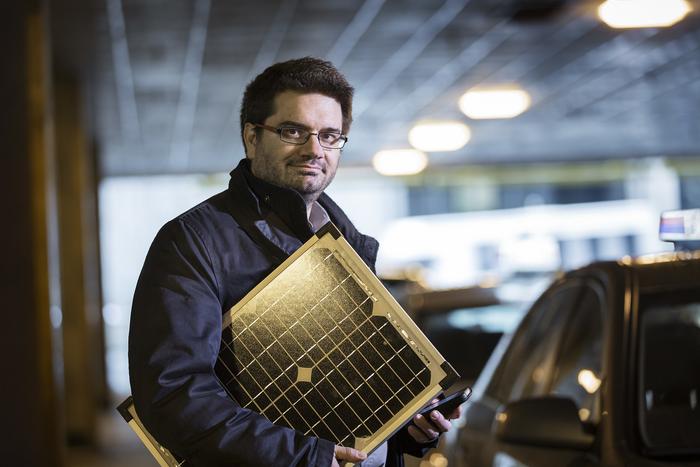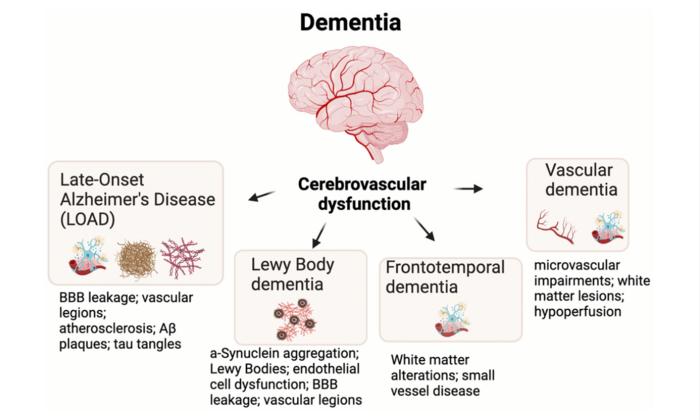Wearable Continuous Diffusion Enables Skin Gas Analysis
In an era where wearable technology is advancing at an unprecedented pace, a groundbreaking development has emerged that could revolutionize personal health monitoring and environmental sensing. A research team led by Clausen, D., Farley, M., Little, A., and colleagues has unveiled a novel wearable device that continuously analyzes gases emitted from the skin through a […]


In an era where wearable technology is advancing at an unprecedented pace, a groundbreaking development has emerged that could revolutionize personal health monitoring and environmental sensing. A research team led by Clausen, D., Farley, M., Little, A., and colleagues has unveiled a novel wearable device that continuously analyzes gases emitted from the skin through a diffusion-based method. This pioneering technology, recently published in Nature Communications, promises a new avenue for non-invasive, real-time physiological and environmental data collection that could have far-reaching implications in healthcare, sports science, and beyond.
The human skin is not just a protective barrier; it excretes a variety of volatile organic compounds (VOCs) and gases that reflect metabolic, inflammatory, and even psychological states. Until now, capturing and interpreting this complex biochemical dialogue has been a challenge due to the limitations of current sensor technology and the intermittent, often invasive nature of sampling methods. The device engineered by Clausen and collaborators addresses these challenges head-on, utilizing continuous diffusion-based sampling to monitor skin gas emissions with unparalleled sensitivity and temporal resolution.
At the heart of this wearable lies a diffusion chamber, a microengineered component that draws trace gases passively through a semipermeable membrane. This approach harnesses the natural concentration gradients of skin-emitted gases, enabling the device to function in a steady-state mode without requiring active pumping systems or bulky hardware. The reduction in mechanical complexity not only enhances wearability and comfort but also significantly extends battery life, making continuous, day-long monitoring feasible.
The researchers integrated miniaturized chemical sensing arrays capable of detecting a broad spectrum of skin gases including ammonia, acetone, isoprene, and nitric oxide—each a biomarker linked to metabolic functions or disease states. For instance, acetone concentration on the skin correlates with fat metabolism and can be a non-invasive indicator of diabetic ketoacidosis, while nitric oxide fluctuations may reflect inflammatory processes in the body. Notably, the sensor’s chemical selectivity was enhanced by innovative surface functionalization techniques, which minimize cross-sensitivity and improve detection thresholds to parts-per-billion levels.
To demonstrate real-world applicability, the team conducted extensive trials involving human subjects engaging in various physiological states, including resting, exercising, and postprandial periods. The device successfully recorded dynamic shifts in skin gas profiles, correlating changes with subjects’ physical activity intensity, glucose metabolism, and oxidative stress markers. Such live monitoring capacity heralds a new class of personalized diagnostics, empowering users and clinicians alike with actionable data streaming continuously from the skin’s biochemical interface.
Beyond health monitoring, the implications for environmental exposure assessment are profound. The device’s sensitivity and selectivity enable detection of external gases absorbed through the skin, providing insights into individual pollutant burdens and exposure patterns in real time. In an increasingly polluted world, this function could add a vital dimension to occupational health and urban living risk assessments, potentially preventing long-term respiratory or cardiovascular diseases.
The design process involved interdisciplinary collaboration spanning materials science, bioengineering, analytical chemistry, and data science. Machine learning algorithms were incorporated to interpret complex sensor signals, extract relevant biomarkers, and filter noise from environmental variations. This synergy of hardware and software crafts a seamless user experience where raw chemical data are translated into meaningful health or exposure insights, delivered via smartphone or cloud platforms for personalized feedback and longitudinal tracking.
Overcoming challenges related to interference from sweat, skin moisture, and mechanical deformation was critical in achieving reliable performance during daily wear. The device’s enclosure employs breathable yet waterproof membranes, and adaptive calibration routines adjust for temperature and humidity variations, ensuring data fidelity across diverse conditions. Moreover, ergonomic trials affirmed the device’s comfort and unobtrusiveness, facilitating adherence and long-term deployment.
This continuous skin gas analysis technology offers compelling potential for advancing sports medicine. Athletes can benefit from real-time metabolic monitoring, enabling optimized training regimens and early detection of overtraining or dehydration. Similarly, clinical settings might deploy these wearables for chronic disease management, such as monitoring inflammation in autoimmune disorders or metabolic shifts in diabetes, reducing the need for invasive blood tests and hospital visits.
Future iterations of this technology envision integration with other physiological sensors, such as heart rate monitors, accelerometers, and temperature probes, crafting a holistic biosensing ecosystem. The multi-modal data fusion would enhance diagnostic accuracy and broaden the scope of detectable conditions, from mental health fluctuations reflected in skin-emitted cortisol analogues to pathogen markers secreted through the skin.
Commercialization pathways appear promising, driven by the device’s scalability, low power requirements, and user-friendly interface. The research team is actively pursuing partnerships with consumer electronics and medical device companies to refine the product design for mass market deployment. Ethical considerations and data privacy frameworks are being established to protect user information and ensure responsible usage.
While the current study represents a significant leap in skin gas analysis, some limitations remain. The device primarily focuses on volatile chemical species; non-volatile or less diffusible skin metabolites warrant alternate sensing approaches. Additionally, further expansion of biomarker libraries and validation in diverse populations will strengthen clinical utility and inclusivity.
In conclusion, the wearable continuous diffusion-based skin gas analysis technology unveiled by Clausen, Farley, Little et al. stands at the forefront of a new paradigm in personalized health monitoring. Marrying sophisticated chemical detection with elegant engineering and intelligent data processing, this innovation paves the way for unobtrusive, continuous insights into the complex interplay between the human body and its environment. As wearable biosensors continue to evolve, this work exemplifies how fundamental scientific insights can translate into transformative tools that empower individuals with knowledge and control over their health.
Subject of Research: Skin gas analysis; wearable biosensors; continuous monitoring; diffusion-based sensing; volatile organic compounds detection
Article Title: Wearable continuous diffusion-based skin gas analysis
Article References:
Clausen, D., Farley, M., Little, A. et al. Wearable continuous diffusion-based skin gas analysis. Nat Commun 16, 4343 (2025). https://doi.org/10.1038/s41467-025-59629-x
Image Credits: AI Generated
Tags: advancements in sports science monitoringchallenges in biochemical gas analysiscontinuous skin gas analysis devicediffusion-based gas sampling technologyimplications of wearable health devicesinnovative sensor technology for healthcaremetabolic and psychological state monitoringmicroengineered diffusion chamber technologynon-invasive physiological data collectionreal-time environmental sensing solutionsvolatile organic compounds skin emissionswearable technology for health monitoring
What's Your Reaction?

































